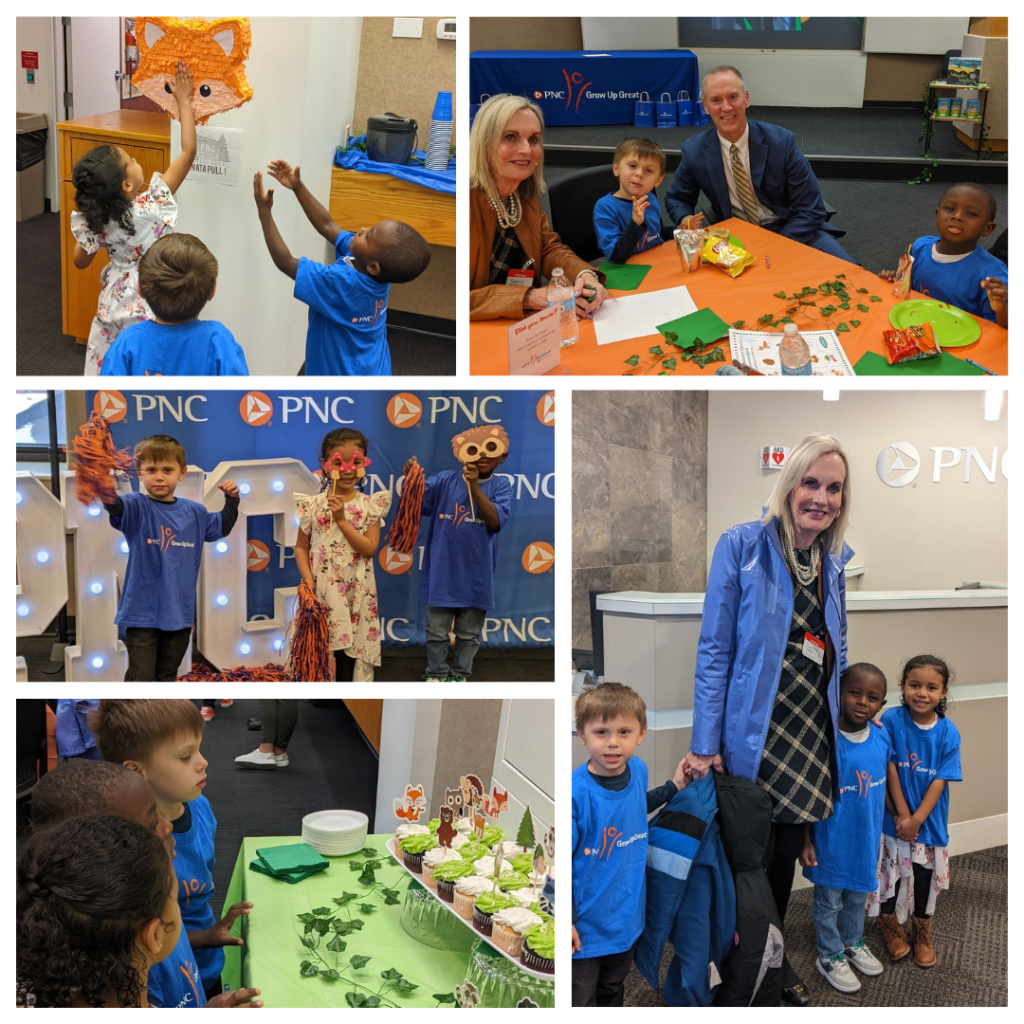PNC Grow Up Great is a $500 million initiative through the PNC Foundation to strengthen early childhood education programming for children birth to five years. To celebrate its 20th year, it is providing $10.5 million in grants to create outdoor learning environments in every market. I am very passionate about serving the needs of young children and their families because we know that when children thrive, they are better prepared to take on life’s challenges, develop resilience, and succeed both in and outside the classroom.
When PNC Grow Up Great was in its infancy, Marlene Mosco, the PNC Erie president at the time, contacted me and asked if she could nominate me to serve on the Advisory Board. I was honored to serve, and I have had the distinct privilege of working with countless forward-thinking leaders in creating brighter futures for young children and their families for over 15 years.
In April, I joined some of our children who attend early childhood education programs at the Elizabeth Lee Black School for a 20th anniversary celebration of PNC Grow Up Great. The children were engaged in fun learning activities, enjoyed a wonderful lunch, and got to meet Jim Stevenson, the Regional President of PNC. I am truly grateful to Jim and his exceptional team who are so dedicated to supporting the advancement of early childhood education in our region and beyond. I’ve included some photos from our event.

Yesterday, I attended a PNC Grow Up Great Advisory Meeting to hear about an update on PNC and to learn about the factors impacting early childhood education as well as the programs and resources that will have the most impact for children, their families, and communities in the coming years.
During the meeting, I was interested to learn:
- PNC is establishing a new brand that reflects a full-service bank with an empathy advantage: Brilliantly Boring since 1865.
- In 2023, 7% of 3-year-old children were enrolled in programs vs 3% in ’02.
- In 2023, 35% of 4-year-old children were enrolled in programs vs 14% in ’02.
- Declining birth rates will significantly impact the number of students enrolled in school. This might be a huge addition to being able to serve 3- and 4-year-old in schools.
- Childcare continues as a significant issue and challenge for our work force.
I am already looking forward to our next meeting this Fall.


